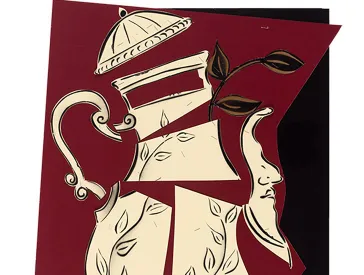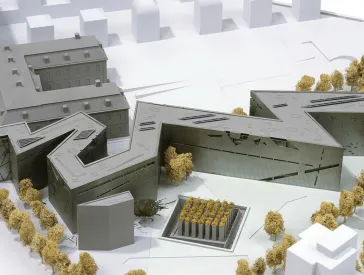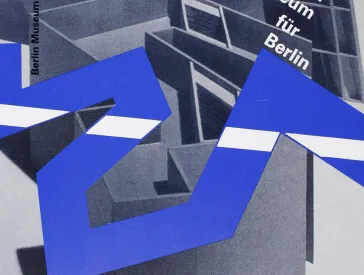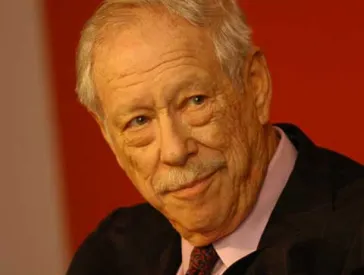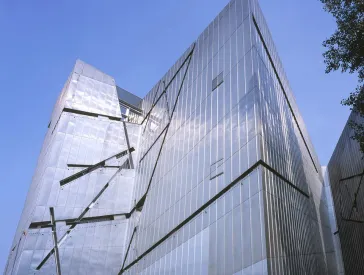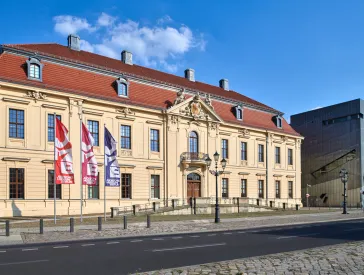
Objects from Our Museum’s History
Background
The origins of the Jewish Museum Berlin date back to the 1970s in West Berlin. At that time, there was no museum in Germany devoted solely to German-Jewish history, although a few exhibitions on the history of Jewish culture had taken place in the 1960s. An independent museum governed by the Jewish community – like the museum in the Oranienburger Strasse that was forced to close in 1938 – was not planned. The desire was rather to integrate Jewish history into the history of the city as a whole, but still to keep it separate. The concrete administrative and conceptional implementation of these ideas was fertile ground for conflict, particularly against the backdrop of the profound historical upheaval since 1989.
The Jewish Museum in the Berlin Museum
The idea of a new Jewish museum in Berlin emerged in 1971 in connection with the exhibition Achievement and Destiny, organized by the Berlin Museum to mark the 300th anniversary of the founding of the Jewish Community of Berlin. The Berlin Museum was founded in West Berlin in 1962, following the erection of the Berlin Wall, as a museum of the city’s history. Since 1969, it had been located in the old Superior Court building on Lindenstrasse.
The board of the Jewish Community, the management of the Berlin Museum, and the Berlin Senate planned a "Jewish Museum" connected to the Berlin Museum and devoted to the history and culture of Berlin’s Jews. The idea was to rebuild the baroque palace of the Court Jew Veitel Heine Ephraim – which had been dismantled in 1936 and whose façade was in storage in the western part of the city – opposite the Berlin Museum on Lindenstrasse. Apart from the Jewish Museum, it was also intended to house the department on theatrical history, the coin collection, and artifact storage. To support the project, the Society for a Jewish Museum in Berlin held its founding meeting in November 1975 and was officially established in February 1976. It was chaired by Hanns-Peter Herz, a journalist, and Heinz Galinski, chairman of the Jewish Community of Berlin.
Many Jews who were born in Berlin and were exiled during the Nazi period joined the society and gave major additions to the collection. In 1978, the Berlin Museum exhibited the new acquisitions for the future Jewish Museum for the first time.
In 1979, the cultural anthropologist Dr. Vera Bendt was appointed to head the “Jewish Department” and establish the Jewish Museum. She expanded the collection substantially in the years that followed and organized several exhibitions, among them Synagogues in Berlin in 1983.
In 1981, the Berlin Senate struck the reconstruction of Ephraim Palace from its plans and gave the façade pieces to the East Berlin municipality. To demonstrate that it had not dropped its plans for a Jewish Museum or a Jewish Department, the Senate disbursed funds to acquire the Judaica collection of Zvi Sofer, a cantor from Münster.
In 1984, an exhibition space on the ground floor of the Berlin Museum was provided to the Jewish Department, supplemented in 1986 by three rooms on the second floor of the Martin-Gropius-Bau. Up until 1998, the permanent exhibition of the Jewish Department was shown in two rooms, while a further room displayed temporary exhibitions on German-Jewish themes.
The plan to expand the Berlin Museum to incorporate a building for the Jewish Museum was still in place. The concept for the new museum’s scope, however, had changed a great deal between the 1970s and the announcement of the competition in 1988, and the political framework underwent further radical change after 1989.
Who is Zvi Sofer?
Zvi Sofer (1911–1980), cantor, and collector, born in Podolia, 1929 Aliyah, academic studies in Vienna, in 1938 re-emigrated to Palestine, from 1959 dedication to the revival of Jewish communities in Germany
In November 1988, concurrent with the opening of the Jewish Museum in Frankfurt am Main and the announcement of the reconstruction of the New Synagogue in the eastern part of the city, the West Berlin Senate announced a competition for the "Extension of the Berlin Museum with a Jewish Museum Department." Some 165 entries were submitted before the April 1989 deadline. The jury, with Josef Paul Kleihues as the presiding juror, awarded first prize to Daniel Libeskind’s "Between the Lines" design in June 1989.
Just a few months later, the Berlin Wall fell, and the Berlin state’s architectural and cultural policy priorities shifted. Whether the design would be built was called into question for a time. After intense debate, the Senate decided in fall 1991 to go ahead with the building as planned. In November 1992, on the occasion of the commemoration of the Pogrom Night, the cornerstone was laid.
These decisions had far-reaching consequences. Most prominently, the Daniel Libeskind design’s references to Judaism and the Holocaust laid open the points of conflict inherent in the "integrative concept" that had so far been smoothed over with compromises.
Continue to the next chapter of the museum’s history, “Controversies and Contradictions.”
Architectural model of the design for the Jewish Museum Berlin by Daniel Libeskind, on permanent loan from the Berlin Senate Department for Urban Development; Jewish Museum Berlin; photo: Jens Ziehe
From Concept to Cornerstone
In the 1980s, the project of a separate building for the Jewish Museum became ever more closely linked to the desire for an annex to house the Berlin Museum’s local historical collections and exhibitions. The premise of the "integrative approach" developed by Rolf Bothe, director of the Berlin Museum from 1981 to 1992, and Vera Bendt, chief curator of the Jewish Museum, was to unite the two museum concepts with their different collections, target demographics, and content, while giving the Jewish Museum some autonomy. The approach proposed an independent status for the Jewish Museum within the Berlin Museum and became the basis for the architectural competition and further conceptual planning.
Citation recommendation:
Jewish Museum Berlin (2020), Objects from Our Museum’s History. Background.
URL: www.jmberlin.de/en/node/2010
History of the Museum: Ideas, Debates, Decisions, Inauguration (4)
